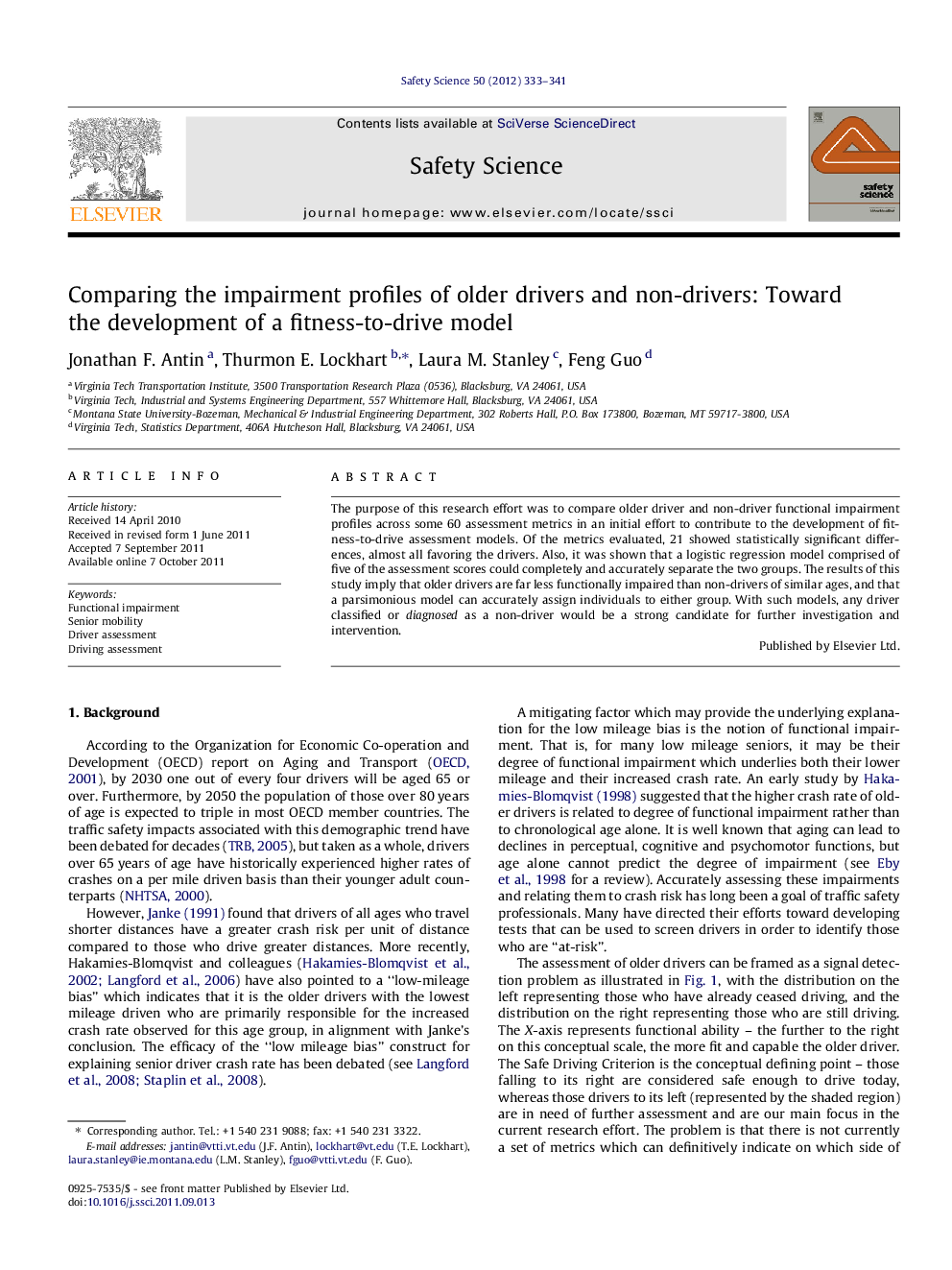| Article ID | Journal | Published Year | Pages | File Type |
|---|---|---|---|---|
| 589585 | Safety Science | 2012 | 9 Pages |
The purpose of this research effort was to compare older driver and non-driver functional impairment profiles across some 60 assessment metrics in an initial effort to contribute to the development of fitness-to-drive assessment models. Of the metrics evaluated, 21 showed statistically significant differences, almost all favoring the drivers. Also, it was shown that a logistic regression model comprised of five of the assessment scores could completely and accurately separate the two groups. The results of this study imply that older drivers are far less functionally impaired than non-drivers of similar ages, and that a parsimonious model can accurately assign individuals to either group. With such models, any driver classified or diagnosed as a non-driver would be a strong candidate for further investigation and intervention.
► We compare older driver and non-driver functional impairment profiles. ► Metrics showing statistically significant differences strongly favor the drivers. ► We develop assignment models based on a balanced set of key assessments. ► These models successfully assign individuals to driver or non-driver groups.
